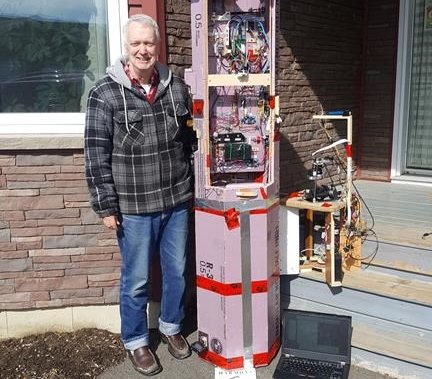
New Brunswick volunteers build flying telescope to see total eclipse above the clouds
Global News
A retired medical physicist has led a group of volunteers to build a sun-tracking telescope that will be hoisted aloft by a weather balloon on the afternoon of April 8.
Early next month, millions of Canadians will gaze skyward to witness a total solar eclipse. But some stand to be disappointed as clouds get in the way.
David Hunter plans to have an unobstructed view, and he’s inviting others to join him. The retired medical physicist in western New Brunswick has led a group of volunteers to build a sun-tracking telescope that will be hoisted aloft by a weather balloon on the afternoon of April 8.
“The primary goal is to get over any existing cloud cover,” Hunter said in an interview, adding that the helium-filled balloon could rise as high as 30 kilometres above the Earth after its launch from Florenceville-Bristol, N.B., at 3:30 p.m. Atlantic daylight time.
As it ascends, the balloon will be carrying a 2.3-metre tube-shaped box equipped with tiny computers, four tracking devices and several cameras, some of which will be transmitting images to a ground station at the Florenceville Inn.
From there, the video will be livestreamed to several viewing locations in western New Brunswick, as well as a YouTube channel, the link for which will soon be posted on Hunter’s website.
The moon’s 185-kilometre-wide shadow will enter Florenceville-Bristol at 4:32 p.m. ADT, plunging the surrounding area into darkness for more than three minutes. Only then will it be possible to safely look at the sun without eye protection.
Assuming there is little cloud cover, the sun’s rays will disappear into twilight, glimmering stars and planets will appear and the horizon will glow orange like at sunset. At that point, the sun’s wispy corona will fan out from behind a black moon, an ethereal sight normally lost in daylight glare.
The temperature will drop about 5 C and nearby animals may act strangely, experts say. And then it will be over, as the moon’s shadow races to the east at about 3,700 kilometres per hour.


















